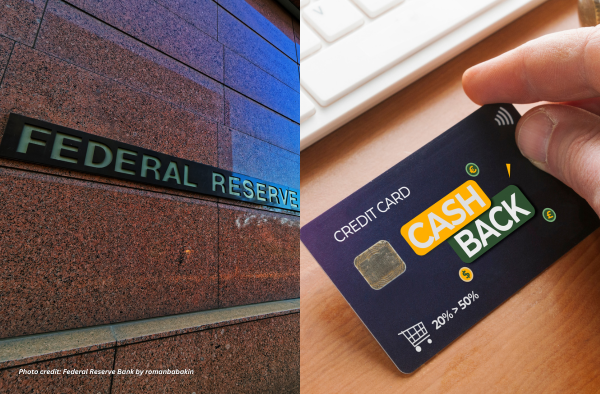Federal budget offers rebates and relief
Share

Labour will provide a $300 energy rebate to every Australian household as part of a $3.5 billion cost-of-living budget. Politicians anticipate that this move will ignite a debate about the Albanese government’s effectiveness in combating inflation.
In a surprising turn of events, the treasurer, Jim Chalmers, has announced that the federal budget has achieved its second consecutive surplus, amounting to an impressive $9.3 billion. However, the projection of a significant deficit of $28.3 billion in 2024–25 overshadows this positive news. This deficit is attributed to the necessary investments in government services, which are deemed unavoidable, as well as the implementation of a $7.8 billion cost-of-living package.
During a pivotal period where the Reserve Bank must decide whether to end the cycle of 13 interest rate rises, the Treasury is projecting a deficit of 1% of GDP in 2024–25, potentially making it the final budget before the next election.
Chalmers informed reporters in Canberra that the government has the ability to actively participate in the battle against inflation without causing significant harm to the economy, especially during a period of projected slow growth. Experts anticipate a modest growth of 1.75% for the Australian economy this year, followed by a slight increase to 2% in the next financial year. However, the projected rise in unemployment from 4% to 4.5% raises concerns.
Alongside the implementation of energy rebates and the restructuring of stage-three income tax cuts, taxpayers can expect to receive an average of $36 per week starting in July. Furthermore, the federal government has allocated $1.9bn towards a 10% boost in the maximum rate of rent assistance, as well as $3bn for a comprehensive pharmacy package that includes freezing Pharmaceutical Benefits Scheme medicine co-payments at $31.60 until 2026.
Although the budget’s cost-of-living measures received support from the opposition, welfare advocates and independent senators Jacqui Lambie and David Pocock criticised the un-means-tested $300 payment.
Chalmers informed reporters that the cost-of-living package consisted of a combination of both broad and targeted measures. The government has made energy rebates universal in response to the financial strain faced by individuals across various income levels.
During his speech, Chalmers mentioned that the Treasury projected a decrease of 0.75% in inflation for this year and 0.5% for next year as a result of these measures. In a recent statement to reporters, he emphasised that the government is not simply handing out money to individuals but instead offering credits through energy retailers. Household bills receive these credits, which total $75 per quarter.
“Just as every Australian taxpayer will get a tax cut, every Australian household will get energy price relief,” he told parliament, noting that 1 million small businesses will also benefit from a $325 rebate.
“Keeping the lights on for families and businesses – and keeping downward pressure on inflation.”
In a recent announcement, Chalmers unveiled an ambitious goal for the majority of workers to possess a tertiary qualification by 2050. Additionally, Chalmers has allocated a substantial investment of $1.6 billion towards tertiary education.
The funding allocation includes $500 million for priority skills, as well as the $1.1 billion cost of the Universities Accord response. Additionally, the allocation includes $427 million for new practical placement payments, $240 million for controlling the growth of student loans, and $350 million for fee-free university preparation courses.
The government has allocated $2.2 billion for aged care and $2.8 billion for improving Services Australia. This includes $1.8 billion specifically designated for hiring frontline staff in order to reduce backlogs. In response to mounting public scrutiny regarding border control, the government allocated an additional $100 million to the Department of Home Affairs and $124 million to the Australian Border Force for the purpose of enhancing civil maritime security.
These investments are a significant portion of the government’s spending, according to the finance minister, Katy Gallagher. The government considers this spending to be necessary and unavoidable. They account for two-thirds of the $25 billion nett decisions in this budget, with the cost-of-living package receiving the remaining third.
The budget also includes a contingency reserve that will increase from $14.7 billion in 2025–26 to $26.5 billion in 2027–28. Chalmers informed reporters in Canberra that this provision serves as a prudent measure for pending policy decisions that have not yet undergone a thorough cost evaluation. These decisions encompass areas such as aged care, early childhood education pay cases, and negotiations with states regarding schools and hospital funding.
In the next decade, the Albanese government has committed to investing $22.7 billion in its Future Made in Australia plan. This plan caught the attention of the Coalition, which described it as a potential area for budget cuts. The proposal outlines a substantial $13.7 billion in production tax incentives for the development of green hydrogen and processed critical minerals. Furthermore, the proposal dedicates a $1.7 billion innovation fund to priority sectors like green metals and “low-carbon fuels.”
Chalmers said the Future Made in Australia Act would set conditions “to ensure investors benefiting from our incentives are supporting their people and communities” – including that industries created “secure, well-paid jobs for our people”.
Australia’s 2024 budget includes measures such as increased funding for aged care and a freeze on medicine prices under the PBS, with a particular focus on pensioners. The shadow treasurer, Angus Taylor, told ABC TV the opposition “cannot support billions in handouts to billionaires”, rejecting the production tax credits.
He described cost-of-living measures as “a Band-Aid on a bullet wound” but accepted the Coalition would support them.
“You should be dealing with the source of the problem when inflation is raging,” Taylor said. “The government isn’t because [the budget] is designed for election and not a cost-of-living crisis.”
The government has announced that the budget includes $6.2 billion in new funding for housing, bringing the total amount to $32 billion over a span of 10 years. However, the Greens have criticized this decision, pointing out that a significant portion ($9.3bn) of this funding goes towards extending the national agreement on social housing and homelessness with the states.
Adam Bandt, the leader of the Greens, criticised cost-of-living relief as mere “band-aid measures” and pointed out that a significant portion of renters will not benefit from them due to the lack of rent assistance. In an interview with ABC TV, Bandt stated that the minor party is in favor of expanding the green metal sector.
The budget includes $27.9bn of savings or revenue measures over four years, with the largest portion coming from a reduction in the growth of national disability insurance scheme spending, amounting to $14.1bn. The plan involves implementing measures worth $2.5 billion to address issues such as the shadow economy and tax avoidance. Additionally, there will be a tightening of capital gains tax rules for foreign residents, amounting to $600 million.
Public Spectrum is the first knowledge-sharing platform in Australia to embrace the entire public sector. This website is a platform where you can connect, collaborate, empower, inspire, and upskill with public sector professionals.










Today’s Pick
11th Annual Aus Goverment Data Summit
April 1, 2025
7th Annual NZ Government Data Summit
May 7, 2025
3rd Public Sector Comms Week
May 14, 2025
Subscribe
We send emails,
but we do not spam
Join our mailing list to be on the front lines of healthcare , get exclusive content, and promos.
AI appointment Australia Australian boost boosts business businesses covid-19 cyber cyber attack cybersecurity cyber security data data breach data management defence Digital employment enhance enhances fraud funding governance government grants infrastructure Innovation Lockdown management new zealand NSW NZ online privacy public Public Sector queensland renewable energy scams security Social Media Technology telecommunications victoria
-

Understanding and building your digital strategy
Digital Government, Opinion
-

Featured Leader: Jamie Morse on multi-channel strategies for communication
Communications, Featured Leader
-

Featured Leader: Tegan Tembe of NSW Treasury on creating solid planning strategies and processes
Featured Leader
-

Wirraka Maya Health Service improves patient care with My Health Record
Learning
Show More-

Effects of ineffective communication in the workplace
Communications, Personal Development
-

7 ways you can enhance your personal development skills
News, Personal Development
-

5 advantages of working in the public sector
News, Personal Development, Professional Development
-

7 causes of communication issues in the workplace
Communications, News, Personal Development
Show MoreLast Viewed